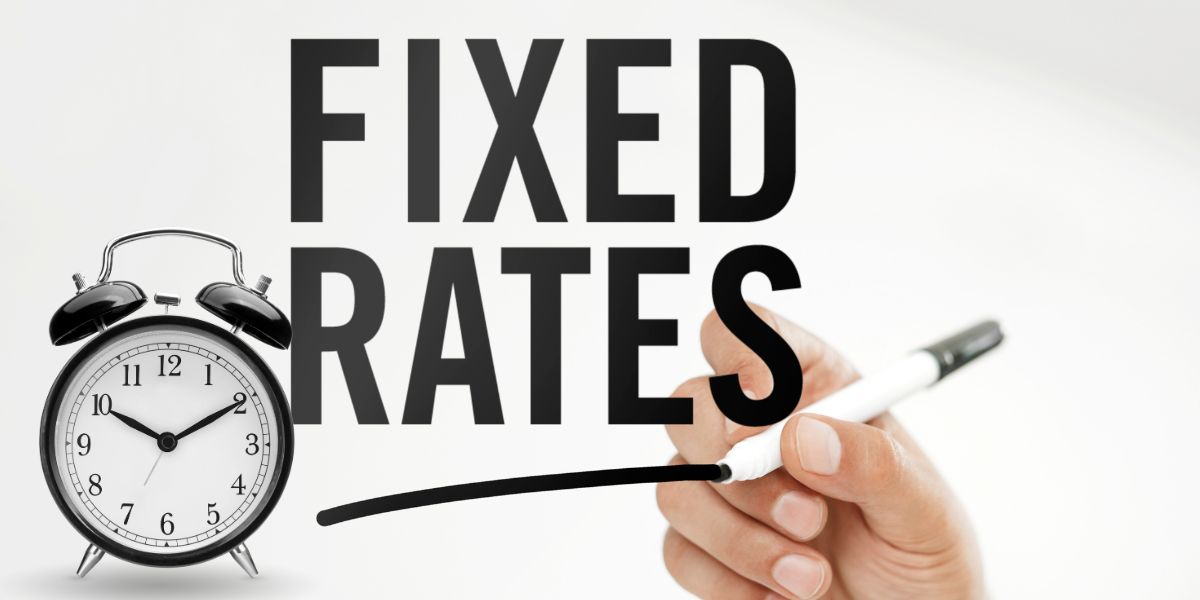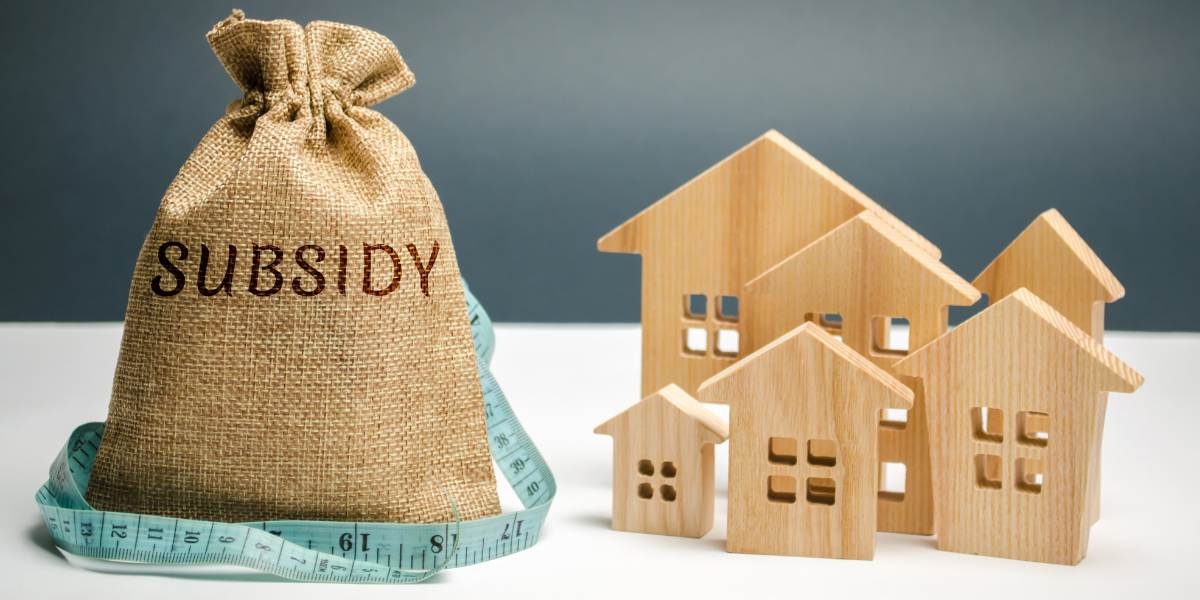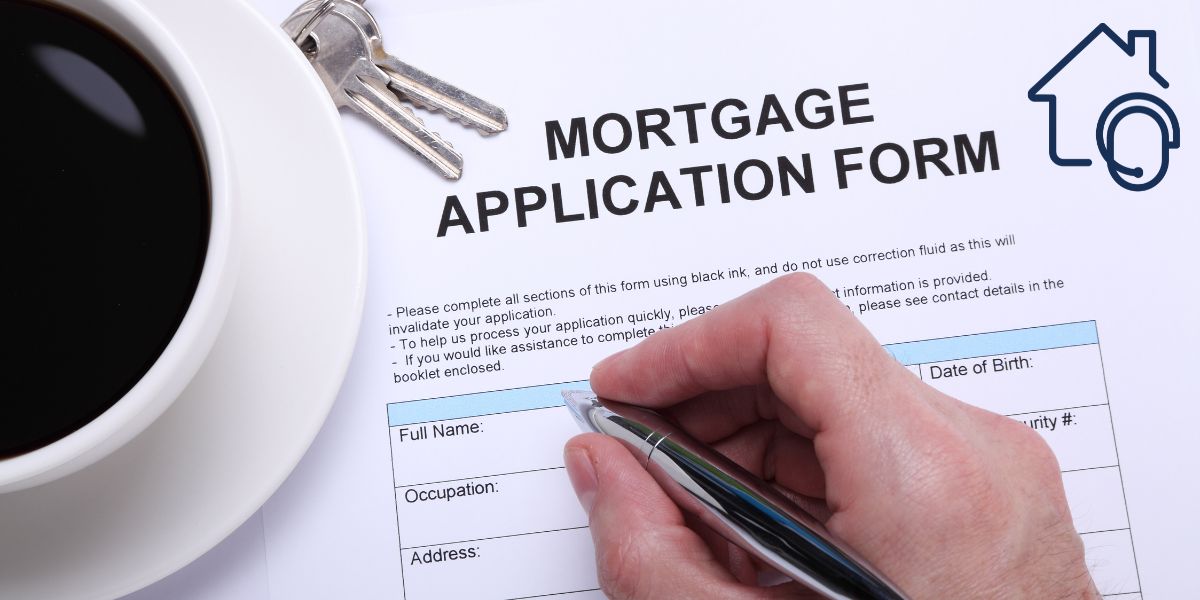
> Calculating the maximum mortgage
What is the term of a mortgage and fixed rate period?
Both the term and the fixed rate period are important indicators when deciding the type of mortgage and the type of mortgage advisor you prefer.
The term of your mortgage is the period of your loan. When you take out that loan (the mortgage), you declare that you will pay back the borrowed money within this period. For mortgages, this is usually 30 years. Based on the term, the monthly amount is also determined: 30 years is 360 months, so the net monthly amount is the total mortgage amount divided by 360. Of course, you also pay mortgage interest on the residual amount. However, as the remaining amount gets smaller and smaller, you pay less and less interest. You can approach this when paying off in two ways: by repaying on a straight-line or annuity basis.
Read more about the different types of mortgages.
Fixed-interest period mortgage
When you take out a mortgage, you have to choose a certain fixed-interest period and the term of your mortgage. Usually, you can choose between 1, 5, 10 or 20 years. During this period, the mortgage interest rate you pay will remain the same. You lay this down in a contract with the bank. The mortgage interest rate rises and falls continuously. If you take out a mortgage now, and you expect interest rates to rise further in the future, it may be wise to fix the interest rate for a long period. But: the longer the fixed-interest period, the higher the interest rate. This is because the bank runs the risk that interest rates could go up substantially. On the contrary, if you think interest rates will go down in the future, you would do well to choose a shorter fixed-rate period. At the end of that period, you will then enter into a new fixed-interest period, with perhaps a lower interest rate.
Difference between term and fixed-rate period
There is often confusion between the term and the fixed interest period of a mortgage. The official terms are therefore very similar: they talk about legal maturity and economic maturity. The legal term is the fixed interest period: the interest rate is fixed for this length of time (1, 5, 10 or 20 years). The economic term is the total period of the loan: within this period (usually 30 years), the entire borrowed amount plus the interest must be repaid.
Why a 10-year fixed rate or more?
When interest rates are low, many people choose an interest rate fixed 10 years or more. You can then have the low mortgage rates fixed for a longer period.
Apart from what the current interest rate is, a longer fixed-rate period gives you certainty about your monthly costs. You already know exactly how much interest you will pay in the coming years. If interest rates rise further, you won’t notice it in your monthly costs during that period.
Choosing the fixed rate period and term of a mortgage
Usually, the shorter your fixed-rate period, the lower the interest rate you will pay. Still, a short fixed-rate period is not always favourable. Suppose interest rates rise sharply, you’ll feel the consequences immediately after your fixed-rate period expires.
If you expect the interest rate to fall, a short fixed-rate period may be interesting. You will then benefit from the decrease. You can also choose to fix your interest rate at a later date (when the interest rate is lower).
When choosing your fixed-interest period, it is a good idea to look at other factors besides the current interest rate. The most important factors are discussed below.
Your mortgage amount
Your mortgage amount is something to consider when determining your fixed-rate period. Is your mortgage relatively high compared to your income? Then a short fixed-rate period can be risky. If interest rates rise after the fixed interest period, you might run into trouble paying your monthly expenses after that period ends.
Expected interest rate developments
Expected interest rate developments also play a role. Are interest rates expected to fall or stay the same in the coming years? Then it sometimes pays to opt for a short fixed-interest period, so that you can benefit from the low(er) interest rate afterwards. Is a rise in interest rates expected? Then a longer fixed-interest period may be more favourable.
Interest rates are currently meager, so a longer fixed-rate period may be favourable if an increase is expected You can then be sure that you will continue to pay this interest rate for a longer period. Would you like tailor-made advice from a mortgage expert? If so, you can always contact one of our Experts without obligation.
Interest rates
Furthermore, it is a good idea to look at the difference between the interest rates for a short or, on the contrary, long fixed-interest period. Sometimes the difference can be several percentage points, but there are also times when those differences are very small. A slightly longer fixed-rate period is often beneficial if the difference is small.
How long will you live in your home?
Finally, it matters how long you expect to live in your home. Because long-term interest rates are often higher, it is sometimes unfavourable to pay that high rate for longer than necessary. For example, do you expect to live in your new home for no more than five years? Then a long fixed-rate period of, say, 20 years is not always beneficial. Once you move, your situation is often completely different. As a result, it may be more convenient in such a case to pay off your current mortgage and take out a whole new one.
On the other hand, by taking your mortgage with you, you can carry your current interest rate to your next home. So, if interest rates have risen sharply in those five years and the current interest rate is low, it is quite handy to already opt for a 20-year fixed rate for your current home.
20 or 30-year fixed interest rate
When mortgage rates are low, people often choose to fix the interest rate for a longer period. You can then choose 20 or 30 years, for example. Choosing between a 20- or 30-year fixed rate can still be quite tricky.
With a 30-year fixed rate, you have full security until the end of the term; however, you also pay a higher interest rate and can often borrow less. At 20 years, you have the option to transfer after 20 years without penalty, pay less interest and can sometimes borrow more. However, you do run the risk that the interest rate after those 20 years will be higher than now and that you will be stuck with that higher rate for a long time after that for a new fixed-rate period.
After the fixed-interest period
Besides these considerations, it is good to know that once your fixed-interest period expires, you can always choose a new interest rate period. You will be informed by the bank at least three months in advance that your fixed-interest period is coming to an end, so you can decide on this.
It is also often possible to transfer your mortgage after the fixed interest period expires without penalty. Sometimes you will be better off with another mortgage provider and switching your mortgage will save you a lot of money. This depends on the type of mortgage and the type of mortgage advisor.
Grants and subsidies for a mortgage
Term of a mortgage and fixed rate period
Step-by-Step to applying for a mortgage
💡 Need help with finding a mortgage advisor?
We provide you with free help and advice for the best mortgage advisors.


